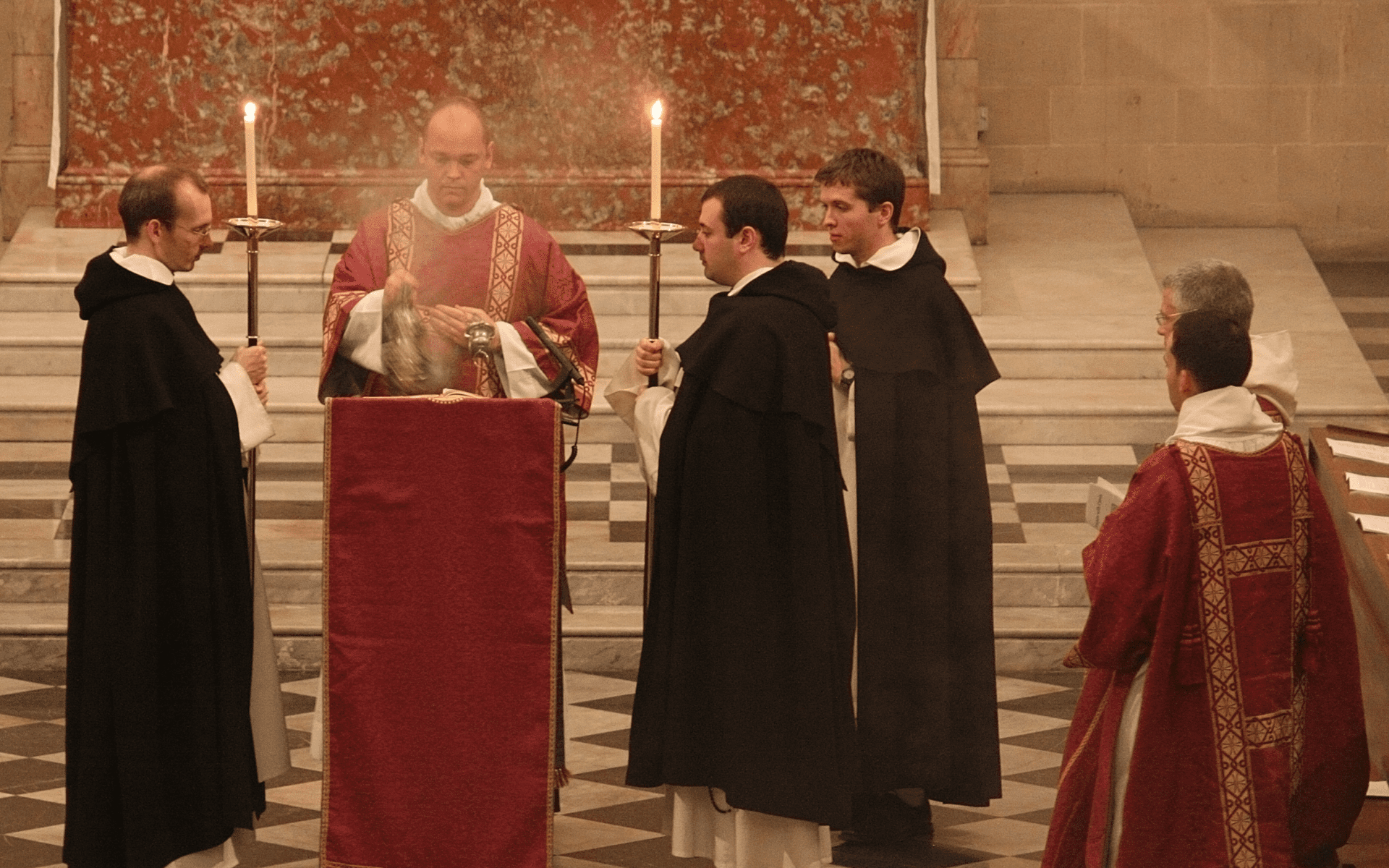The use of the Book of the Gospels features commonly in Sunday celebrations of the Eucharist in the United States. It is one thing to make use of the Book of the Gospels, but it is another to appreciate when and how it is to be used. These latter two points contribute to the ars celebrandi of the celebration of the Eucharist.
A long history predates our contemporary practice of a separate book for the proclamation of the Gospel at Mass. In the tradition, and even today in other language editions, the Book of the Gospels included the complete texts of the four Evangelists. The book would be preset to the section of the Gospel to be sung. Our English editions provide the respective Gospel for the three cycles of each Sunday of the year, for the Sacred Paschal Triduum, for Solemnities, and some Feasts and Ritual Masses. These celebrations indicate the use of the Book of the Gospels belongs to celebrations when the Gospel text is found in the book.
The rites that accompany its use also suggest that the Book of the Gospels has a place in more solemn celebrations. It is noteworthy that the Gospels for the Mass for the Dead are not included in the Book of the Gospels. The Mass for the Dead (also referred to as the Funeral Mass) is not ranked alongside a Sunday or considered festive. In fact, the directions for the Funeral Mass indicate that the Book of the Gospels for that celebration is properly placed on the coffin of the deceased (cf. Order of Christian Funerals, 38).
Our response to the proclaimed Gospel is, “Praise to you, Lord Jesus Christ” (cf. Order of Mass, 16). This response confirms the liturgical tradition that with the Gospel, Christ announces his own word (cf. General Instruction of the Roman Missal, 29; Introduction to the Book of the Gospels, 4). For this reason, the Book of the Gospels, both a sign and instrument of the verbum Domini, “should be truly worthy, dignified and beautiful (cf. General Instruction of the Roman Missal, 349). Even outside the celebration of the Eucharist, the Book of the Gospel should be handled with reverence and carefully stored.
On those occasions when the Book of the Gospels is used, it is typically carried in the entrance procession by the deacon, or in his absence by a concelebrant, or in his absence by a reader, following the cross and before other sacred ministers. In any case, the book’s bearer ought to carry it slightly elevated so that it is easily seen. (cf. General Instruction of the Roman Missal, 120d, 172, 208). The elevation should be natural and not exaggerated. Once the person with the Book of the Gospels reaches the altar, without a bow or genuflection, the book is placed flat, not upright, on the mensa of the altar. (cf. General Instruction of the Roman Missal, 173, 195). Also, the book should be placed flat in such a way as to not to interfere with the veneration of the altar by the celebrant. This action of placing the Book of the Gospels on the altar makes the sacramental connection between the Mystery of Christ proclaimed with the Gospel and the same Mystery that takes place with the action at the altar.
When it comes time for the Gospel, the thurifer and candle bearers go before the altar. The deacon, after receiving the blessing goes before the altar, bows profoundly and picks up the Book of the Gospels, again holding it slightly elevated. The thurifer leads the procession to the ambo. A priest, if he received the blessing from the bishop, does the same. Otherwise, a priest, bowing before the altar, prays quietly, “Cleanse my heart and my lips, almighty God, that I may worthily proclaim your holy Gospel,” then picks up the book for the procession to the ambo (cf. General Instruction of the Roman Missal, 132, 133, 175, 212). The candle bearers stand on either side of the Gospel reader at the ambo (cf. Introduction to the Book of the Gospels, 17).
At the ambo, the Book of the Gospels is opened, the Gospel is announced and signed. It is incensed three times, to the center, left, and right (cf. General Instruction of the Roman Missal, 134, 175; Introduction to the Book of the Gospels, 18). At the conclusion of the proclamation, the acclamation, “The Gospel of the Lord,” is sung or said without the book being raised from the ambo (Introduction to the Book of the Gospels, 20), and then it remains at the ambo. If a bishop is the celebrant, the deacon may bring the Book of the Gospels to him to venerate it with a kiss. The bishop may also bless all present with the Book of the Gospels. After this, the Book of the Gospels is taken to a reverent place (cf. General Instruction of the Roman Missal, 175; Introduction to the Book of the Gospels, 21). It is not carried in the procession at the end of Mass (cf. Introduction to the Book of the Gospels, 22).
In every celebration of the Eucharist, “[t]he reading of the Gospel constitutes the highpoint of the Liturgy of the Word” (General Instruction of the Roman Missal, 60). The proper use of the Book of the Gospels and the marks of reverence given to it reveal to the Savior who redeems his people with his Gospel and fosters a deeper faith in its power and strength among all who hear it.
The first part in this series is available by clicking here. The second part is available here, the third here, and the fourth here.



